Johnny Guitar (1953)
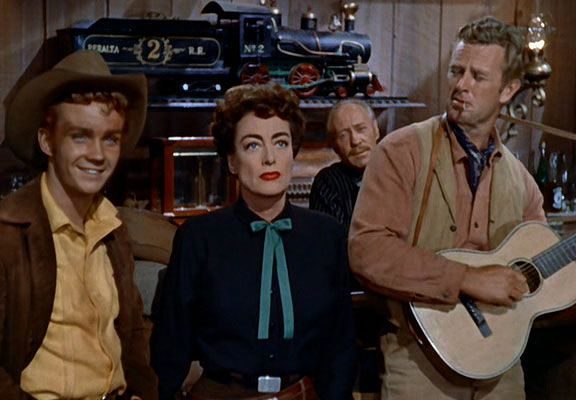
Toronto Film Society presented Johnny Guitar (1953) on Monday, October 28, 1985 in a double bill with Rancho Notorious as part of the Season 38 Monday Evening Film Buffs Series “B”, Programme 2.
Production Company: Republic. Producer: M. Herbert Yates. Associate Producer/Director: Nicholas Ray. Screenplay: Philip Yordan, based on the novel by Roy Chanslor. Photography: Harry Stradling. Editor: Richard L. Van Engler. Art Director: James Sullivan. Music: Victor Young. Song “Johnny Guitar” by Peggy Lee and Victor Young, sung by Peggy Lee. Colour Process: Trucolor by Consolidated. Set Decoraton: Edward G. Boyle, John McCarthy Jr., with uncredited additions by Nicholas Ray.
Cast: Joan Crawford (Vienna), Sterling Hayden (Johnny Guitar), Scott Brady (The Dancin’ Kid), Mercedes McCambridge (Emma Small), Ward Bond (McIvers), Ben Cooper (Turkey), John Carradine (Old Tom), Ernest Borgnine (Bart Lonergan), Royal Dano (Corey), Frank Ferguson (Marshall Williams), Paul Fix (Eddie), Rhys Williams (Mr. Andrews), Ian MacDonald (Pete).
Although both Fritz Lang and Nicholas Ray were famous exponents of the film noir genre, tonight’s films reveal their experiments in the Westner Genre. Nicholas Ray was hailed by French critics as one of the most important American “auteur” directors, portraying his own style and vision of the world–a bitterness and disenchantment which thrilled the intellectuals of the Cahiers du Cinema in the 1950’s. Truffaut compared Howard Hawks’ “triumph of the mind” to Nicholas Ray’s “triumph of the heart”.
In the suspicious, paranoid McCarthy period of the 50’s, Ray believed himself to be “graylisted” and behaved as an honorary blacklistee, with the result that Johnny Guitar is considered to be the first obvious anti-McCarthy Western. The scathing comments about fascist behaviour are disguised in the plot about a posse/lynch-mob out to destroy the encroaching Easterners. Philip Yordan tells of how he and Ray played a trick on Ward Bond, known as one of the Hollywood Fascists, by making him the head of the terrorizing posse. Bond felt the character was a hero, a sympathetic guy…
In Ray’s terms the film was meant to reflect the pervading atmosphere of Hollywood at the time, the aura of persecution and hostility of the film industry. In fact, the film is not really a true Western, but, as Truffaut noted, it has a certain quality that is dream-like, magical, unreal to a degree, delirious (Cahiers due Cinema, 1955). In the late 40’s and early 50’s, many of the archetypal film noir elements were successfully transposed into the Western film. In Johnny Guitar, the preoccupation with perverse sexuality and overt brutality combine with the narrative of mob violence to create a sense of cynicism and fatality which reflects the slick, noir sensibility of the urban gangster films. The rampant Freudianism of the 50’s (women tough as nails and men as wimps) is stylized by Ray in every image and symbol. Vienna (“Never seen a woman who is more like a man. She thinks like one, acts like one, and sometimes makes me feel like I’m no one”, says one of her gang) and Emma (“Hang them!”) are the major characters, and the men (with decidedly effeminate nicknames) become hollow and self-effacing in the blaze of the female enmity.
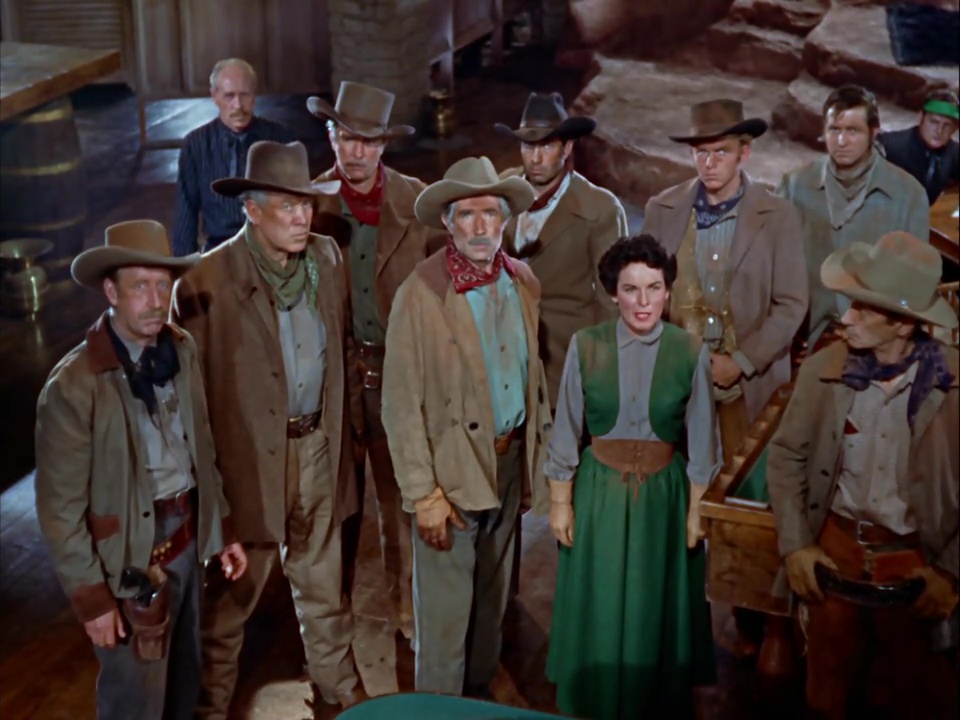
John Crawford was universally panned for this film (Bosley Crowther “as sharp and romantically forbidding as a package of unwrapped razor blades” New York Times, 1954). However, as the sexually liberated femme fatale leader of men and steely-jawed heroine/hero, she is every bit as effective as Barbara Stanwyck in the same type of role. And it is this very type of performance which ensured the undying popularity of the Crawford cult. The well-documented on-set feud with Mercedes McCambridge (who called Crawford “a mean, tipsy, powerful, rotten-egg lady, The Quality of Mercy) enhanced the on-screen rivalry between the two characters. But it is the character of Emma which develops the sub-theme of the film in its violent attack against puritanism. Dressed entirely in black (another symbol of fatality in the film noir), Emma pursued her revenge in hysterical, psychotic fashion, a look of sadistic and repressed joy on her face.
Sterling Hayden and Scott Brady, lacking the fire of the two women, seem rather lost in the film, and it is for this reason that the basic plot of the Existential hero seeking something he has lost fails in this film. As Johnny, the ex-gunfighter, Hayden loses the audience’s sympathy, belonging as he does to the Fonda-family “wooden-Indian school of acting” (J.F. Kreidl, Nicholas Ray). The Scott Brady character also pales next to the viciousness of the women. Ben Cooper, as Turkey, is interesting as the childlike loser who betrays Vienna, and completes a second Freudian triangle with Vienna and the Dancin’ Kid. Ernest Borgnine is also good as the loathsome Bart.
Aside from the psychological innovations, there are interesting effects created by Ray’s use of the wide screen and colour. The Trucolor process, which exaggerated the reading of greens, serves to underline the bizarre atmosphere of the film, and Ray’s ____ of “making (the camera) look for the truth by letting it play for me like an actor” (Cahiers due Cinema) established his ___________________________ success in Rebel Without a Cause.
Notes by Geraldine V. Koohtow

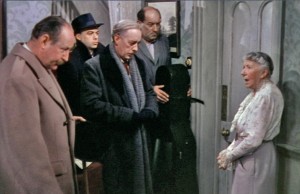
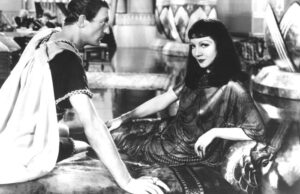
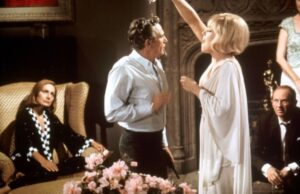






Leave a Reply